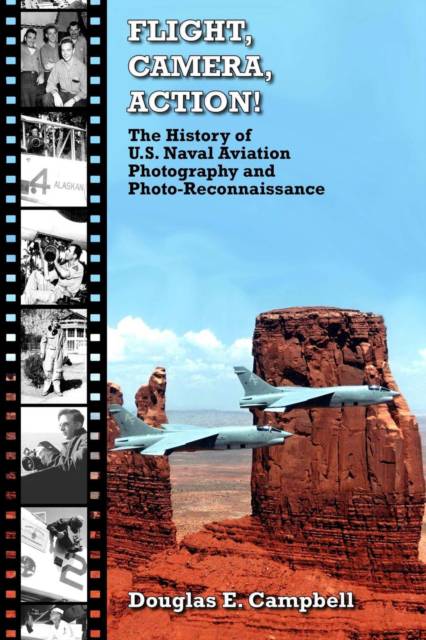
- Afhalen na 1 uur in een winkel met voorraad
- Gratis thuislevering in België vanaf € 30
- Ruim aanbod met 7 miljoen producten
- Afhalen na 1 uur in een winkel met voorraad
- Gratis thuislevering in België vanaf € 30
- Ruim aanbod met 7 miljoen producten
Zoeken
FLIGHT, CAMERA, ACTION! The History of U.S. Naval Aviation Photography and Photo-Reconnaissance
Douglas E Campbell
Paperback | Engels
€ 61,95
+ 123 punten
Omschrijving
The first U.S. Navy aerial photographs were taken in 1913 in support of fleet exercises off Guantanamo, Cuba. Following WWI, a Navy Photographic expedition went north, making the first aerial mapping photos of the Alaskan territory. WWII found Navy shuttermen in the Pacific theatre, performing pre- and post-attack reconnaissance, along with "hitting the beach" to record the war as it unfolded. Shortly after, Navy photographic units were in the Pacific to record early atomic bomb tests. The Navy's aerial photo reconnaissance mission, both at the front end with the weaponless aircrews and the output of thousands of images and photo interpretation, continued to develop through the mid-20th century. The last aerial photo plane in the Navy's inventory was retired after flying to the Smithsonian's Air and Space Museum Annex at Dulles International Airport in Fairfax County, Virginia. The 74 year odyssey of Navy and Marine Corps aerial reconnaissance photography was finished.
Specificaties
Betrokkenen
- Auteur(s):
- Uitgeverij:
Inhoud
- Aantal bladzijden:
- 638
- Taal:
- Engels
Eigenschappen
- Productcode (EAN):
- 9781304471734
- Verschijningsdatum:
- 12/05/2014
- Uitvoering:
- Paperback
- Formaat:
- Trade paperback (VS)
- Afmetingen:
- 152 mm x 229 mm
- Gewicht:
- 920 g

Alleen bij Standaard Boekhandel
+ 123 punten op je klantenkaart van Standaard Boekhandel
Beoordelingen
We publiceren alleen reviews die voldoen aan de voorwaarden voor reviews. Bekijk onze voorwaarden voor reviews.











